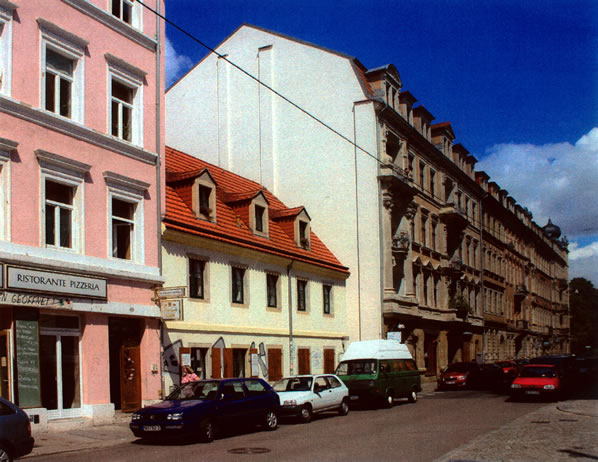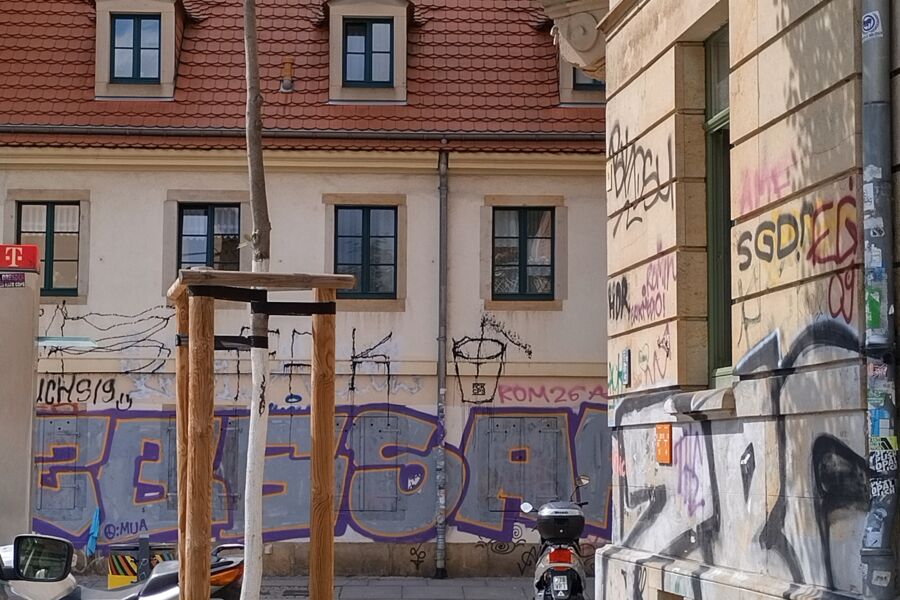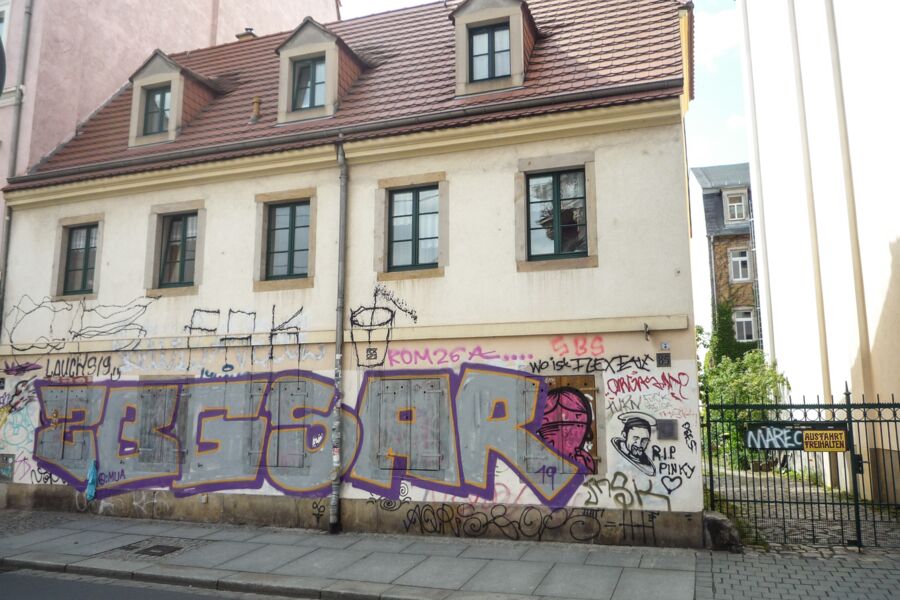
Suburban witnesses
At 85 Alaunstraße, there stands a neoclassical monument, old and crouched between two large buildings. There is a true to detail picture of the little house in the ceiling painting of the passage to the art yards at No. 70 that arose in the building boom of the founding years. Through the building site dust, the view backwards on a rural idyll was romanticised before the incorporation into local authority in 1835. The stone witness dates from this time. Later extensions were added, but the building kept its rural character.
The house was raised as 24 Alaungasse from 1827 to 1830 and belonged to a widow named Schäfer. It remains open whether her husband was one Gottlieb Schäfer who was mentioned in the directory from 1838 as contract coachman, resident at “Viehw. 975”. As a matter of fact, the contract waggoner Siegfried Naumann can be verified as the owner in 1860, after frequent rotation of ownership (C. Freygang in 1846, S. Pause in 1850, G. Heeren in 1855). Horses played an important role on these premises and at the time in general for transport and mounting. For many years, they were standing here in the stable.
In 1895, a four-storey building was erected on the left-hand side that rested clearly on the foundation wall of the little neighbour. On the ground floor of this No. 83, the “Sängerklause” singer’s cell) was established, later to become the tavern “Goldenes Hufeisen” (golden horseshoe). Across the town it was called “Happeldiele” (Happel-hall) in common parlance. Up to 1974, horses were slaughtered here and their meat was served in the front-building pub in big, cheap portions. Here, of all places, a vegan restaurant opened in 2019.
On the right-hand side, there has been a Wilhelminian style building since 1912 that accommodated several families of state railway and post office clerks. While these relied on railway and steam-power, the owners of 85 Alaunstraße remained true to horsepower. In 1910, six motor-driven vehicles could be found in the garages behind the house. More technical progress found its ways here before World War I. Surface-mounted electric cables led to one socket per flat with a maximum load of two kilowatts, cold water from tap above the cast-iron gutter sink in the staircase, and a long-distance telephone connection for the cart owner Zaunick.
In 1945, the war left his wife a widow. She continued the business as a rental for automobiles. Their owners, two men of the surname Hähner, lived in the side building, probably the sons of the coal merchant widow of the same name in the garden building. The advertisement “Wedding and motor cabs” had been visible on the front of the building until 1993.
In that year, the front of the building received its historical paint coat in the course of reconstruction. However, the light yellow, plain surface attracted illegal sprayers again and again, who have a go at each other with rivalling tags at the walls. A proven remedy against graffiti is the commissioning of projects to scene artist. In this case, however, the landmark status of the building doesn’t allow for this.




